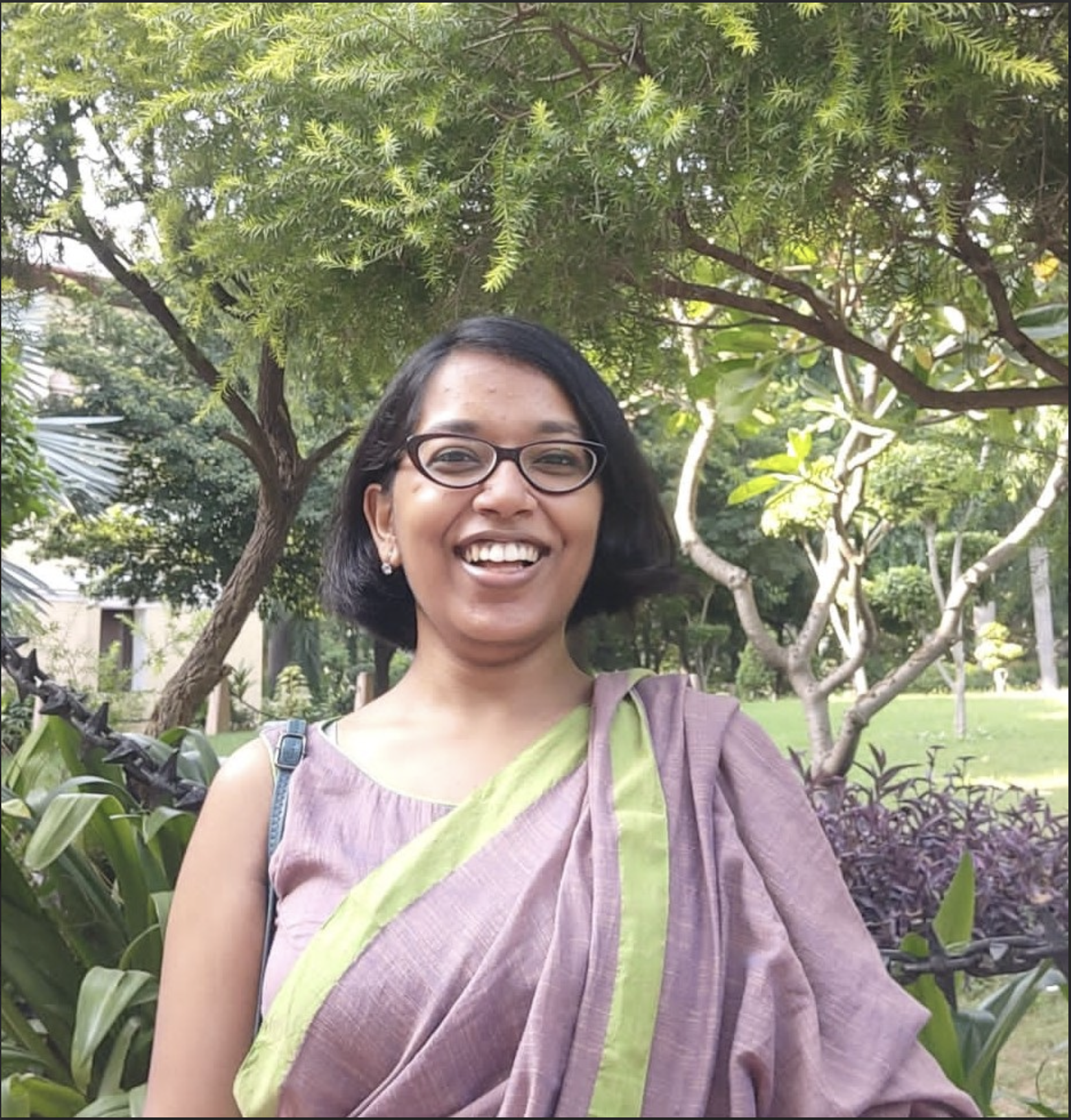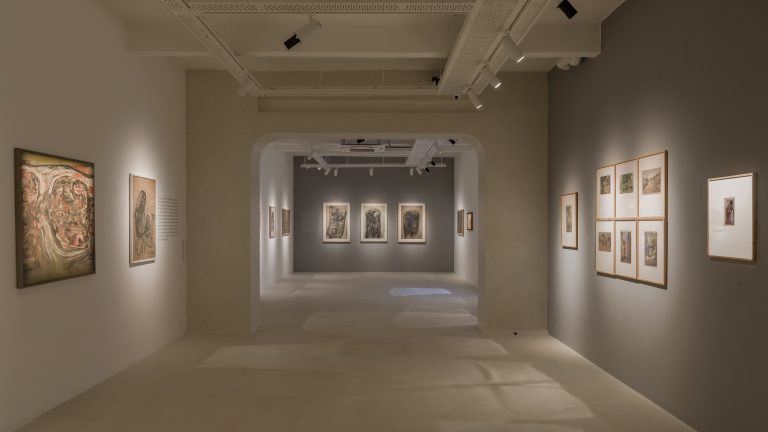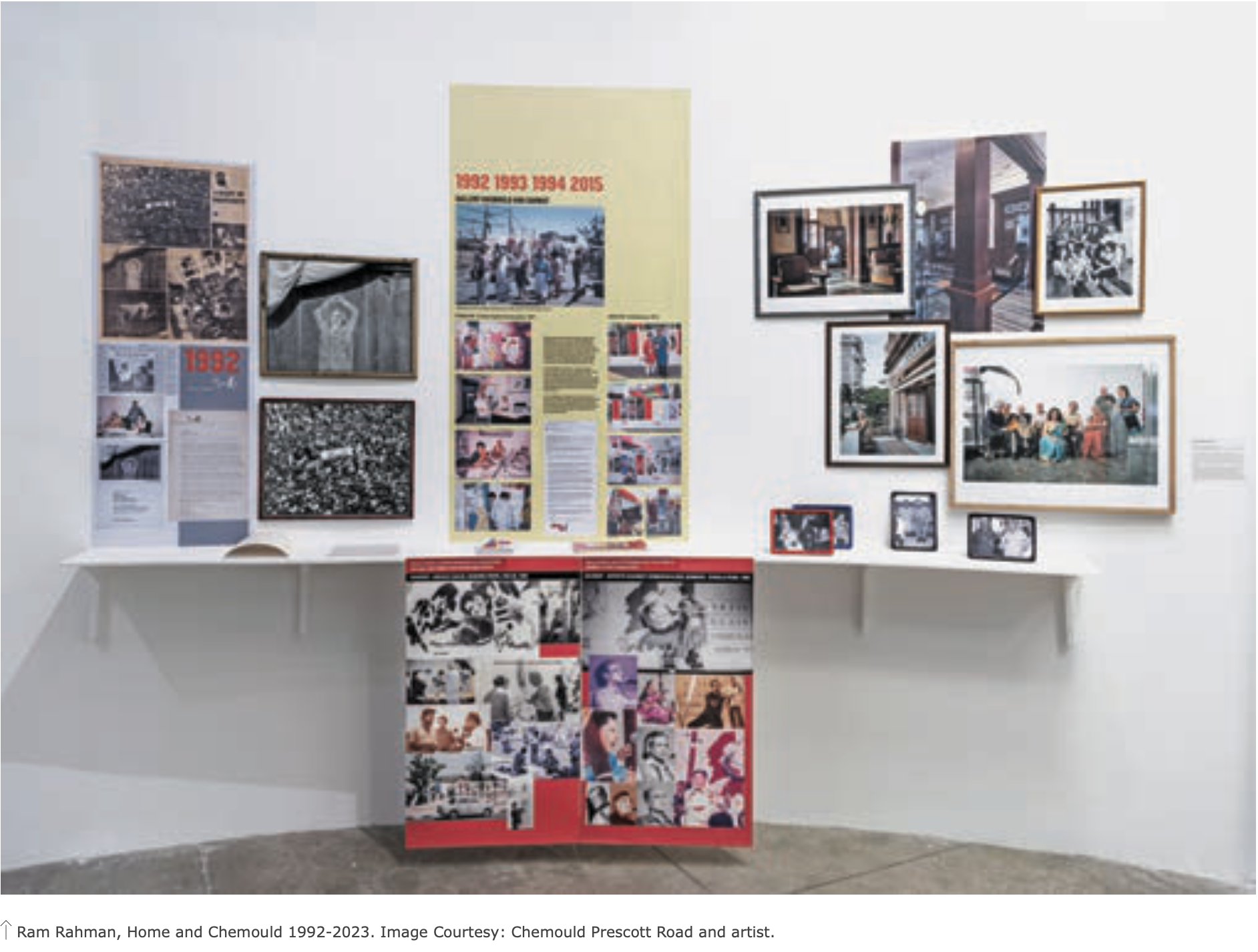
In 1963, a young couple invested in Bombay’s cultural heritage chose to support the arts in the city that was so beloved to them. Sixty years from then, the city has come to be known for its vibrant arts ecosystem, and the couple’s attempt in building a contemporary art space has often been referred to as a breeding ground for fearlessness when it comes to artistic expressions. From having played a crucial role in supporting the Bombay Progressives, to making space for dissent within the white cube space, from fostering what we know as Indian contemporary art to expanding these boundaries, the beloved Chemould of Kekoo and Khorshed Gandhy has seen itself evolve over the decades from a noun to a verb. Bringing this vision to a celebratory exhibition, the curator Shaleen Wadhwana shifts focus to the burgeoning archival material that speaks to the legacy that began with Kekoo Gandhy’s keen interest in the visual arts in the 1960s.
A two-part exhibition, spread over four months, CheMoulding pays tribute to the past by incorporating the archive, while also keeping an eye out for what the future might look like for this family-run gallery. True to its promise of being an intergenerational celebration, it leaves no one behind. Wadhwana, having undertaken extensive research into the Chemould Archives, chose to create prompts for each artist that the gallery helps support. And it is through the shared efforts of the curator, the gallerists, and the wide roster of artists, that the exhibition comes together, paying tribute to the legacy of that young Parsi couple and their vision towards patronage and innovation that was central to their support for the arts in India.
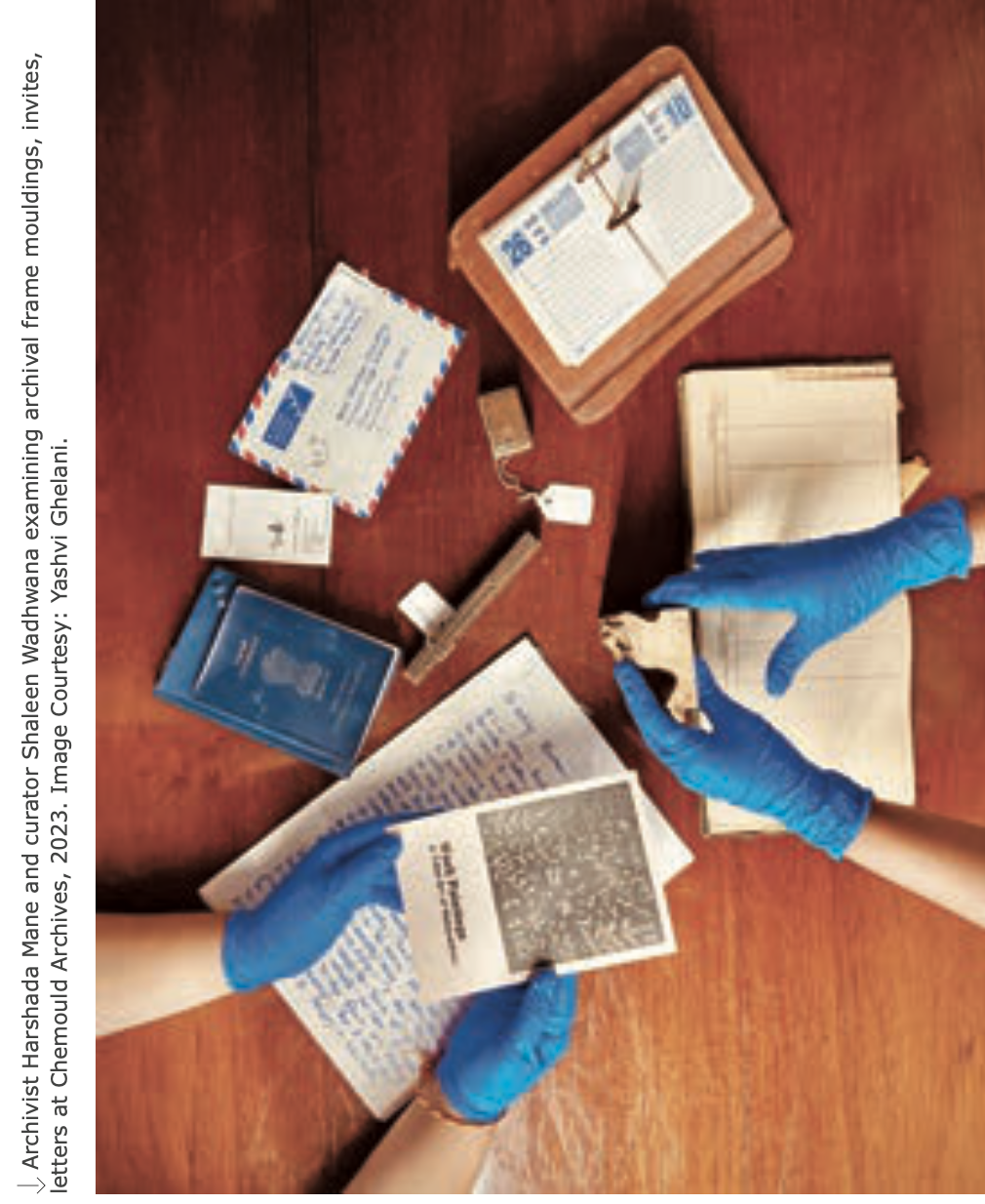
Walking through the exhibition involves not only taking in the artworks but also becoming familiar with the immense history that has been put together in the form of an archive. Wadhwana explains, “Over 15,000 items like letters, awards, invitation cards, albums, catalogues, press clippings, photographs, CDs, mounted slides, stamps, emails, telegrams are part of the documentation from India, Switzerland, Italy, Afghanistan, UAE,Germany, UK, USA and Australia.” Amongst the memorabilia are antique framing moulds made by Chemould Frames, first started in South Bombay by Kekoo Gandhy. It was this space that provided an opportunity for legends like Hussain, Ara, Souza, Raza and others to find a meeting point, a space where their works were being admired by other shop visitors. It paved the way to the opening of Gallery Chemould at the first floor of Jehangir Art Gallery, where it was based till 2007, when it relocated to its present location at Prescott Road.
In Part 1: Framing, curatorial prompts come to life in the works of artists like Nilima Sheikh, Anant Joshi, Gigi Scaria, NS Harsha, Dhruvi Acharya and many more from the Chemould family, across mediums like painting, sculpture, textile, film, printmaking, audio, photography, drawing, literature, and installation. Through multiple entry points, one is witness to how each artist interprets six decades of Chemould, and the lens that each of them chooses to focus on in their artistic intervention. It is through the artist’s gaze that we get to delve deeper into the Gandhy family’s ideological inclinations. The historical context of the myriad ways in which the gallery has expanded amidst Bombay’s evolving art scene becomes the central crux around which everything else is situated.
Mithu Sen’s intervention in time, situated right at the beginning of the exhibition, and Jitish Kallat’s re-imagination of the ‘gallery within the gallery’, become interventions that help situate the exhibition’s thrust right at the surface. But it is when the viewer walks further into the space, that more nuanced details of the archival timeline become visible. Whether be it through Archana Hande’s critical enquiry into history, Tanuja Rane’s tribute to Jangarh Singh Shyam, Desmond Lazaro’s ode to the Gandhy family tree or Atul Dodiya’s take on modernists and their practices, viewers find themselves interacting with not just artistic interpretations, but also coming closer to knowing the Gandhys more intimately.
Kekoo and Khorshed Gandhy didn’t shy away from showing their support for causes they believed in, and one of their strongest assets was their commitment to social justice. Within the heart of the exhibition, one sees this reflected through works by the late Vivan Sundaram, Shakuntala Kulkarni, Ram Rahman and Varunika Saraf. Each of these works, individually talking about social justice, violence and power struggles, harks back to anecdotes about the Gandhy family’s association with social justice movements, their support for organizations like SAHMAT, and their commitment to voices of dissent.
Part 2: Futuring is exactly what it claims to be: an exhibition looking towards the future of Chemould, with one foot firmly planted in the present. Having reflected on the archive for the first iteration, it is the forward-looking gaze that is important here. Picking up from where the first part of the exhibition ends, this section of the celebration makes space for questioning where Chemould is headed towards. Here, Shireen Gandhy, who has helped carry forward her parents’ legacy, and her daughter Atyaan Jungalwalla, become central characters in the Chemould journey.
Within Futuring, Shaleen Wadhwana incorporates Shireen and Atyaan’s vision for art, heritage, and culture for the next generation. Several elements gain prominence over others, amongst which technological advancements become key to how one thinks about innovations in art in the new age. Love, grief, and loss are centralized in thinking about the future, and the lessons archives hold to contest futures of distrust makes for a compelling thought. Paying ode to the retrospective of the past, this part of the exhibition helps cast a gaze towards art-making and institutional support for new-age practices in the time to come.
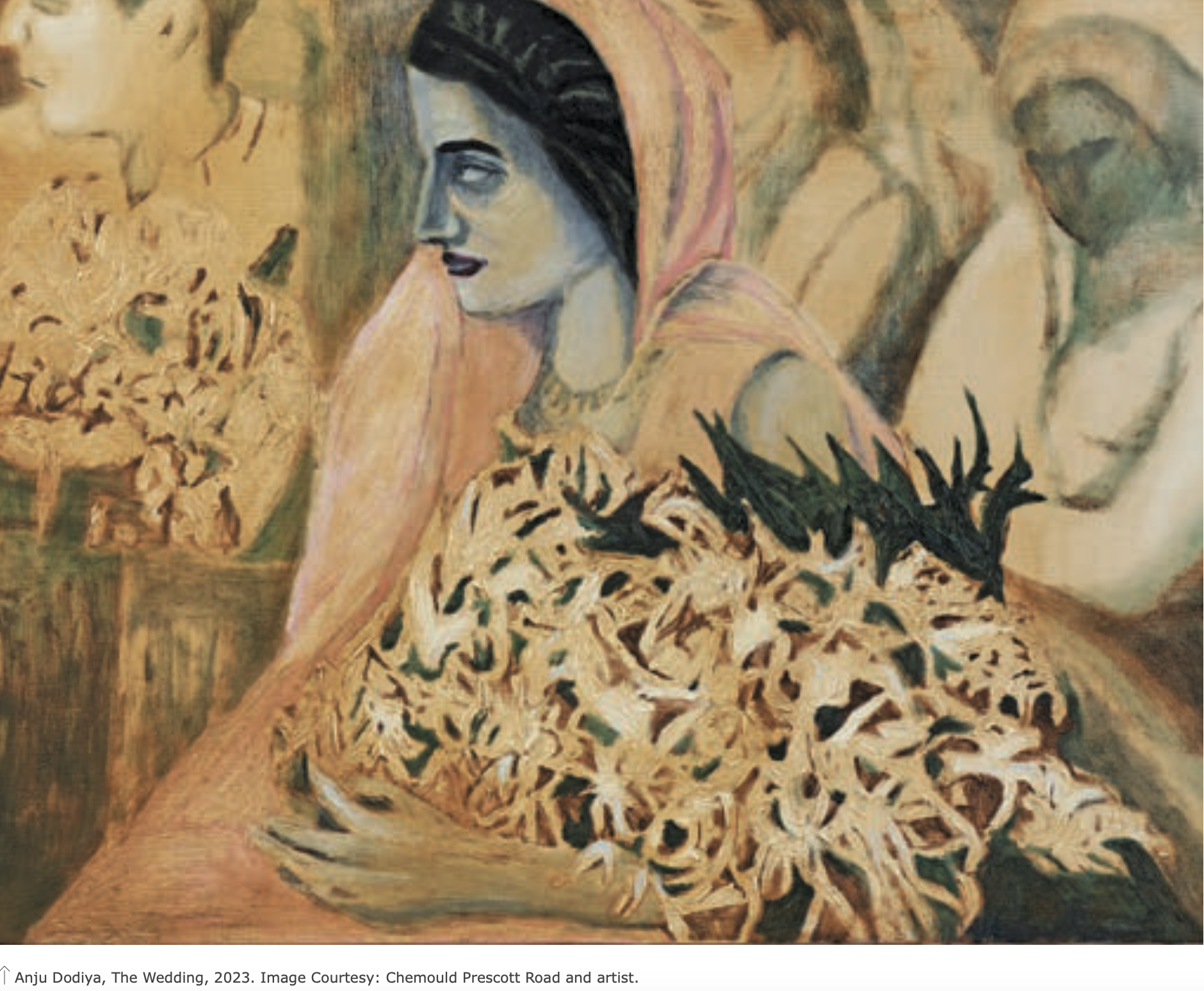
Thinking about present realities and disruptions, and thinking about the trajectory ahead, Wadhwana’s intervention lies in looking at how “archives are framed contextually for our future generations, with an invitation to reflect and do better.” Helmed by big art-world names like Rashid Rana, who blends art with digital technology to create “non-living DNA”, Gulam Mohammed Sheikh, who posits rites of passage between angels and demons, Anju Dodiya, who re- initiates memories of close family bonds through her surreal oil paintings, space is also made for new-age voices that base their practices within community-focused spaces in the city of Bombay.
In many ways, the celebration of six decades of Chemould is an attempt at reflecting on the history of India, the city of Bombay, and the Indian art movement. What could have been just an attempt to chart the gallery’s progress ends up becoming much more by holding space for new and diverse practices, and above all, acknowledging the gaps that pervade archival research. At a time when history and historical narratives continue to be distorted at will, it is narratives like this that hold out hope for the future. It is both a homecoming for those familiar with the gallery, and an invitation to newer sets of audiences to immerse themselves in and interact with the space. In being critical and thoughtful, Chemould provides a wonderful example of the many ways in which the gallerist and artists negotiate the shared experience of navigating through the arts ecosystem, and the possibilities that exist for care, friendship, and belonging within this model.
CheMoulding: Framing Future Archives, Part 1: Framing, CheMould Prescott Road, 16th September – 28th October, Part 2: Futuring, Chemould Prescott Road, curated by Shaleen Wadhwana, 14th November – 23rd December 2024.









